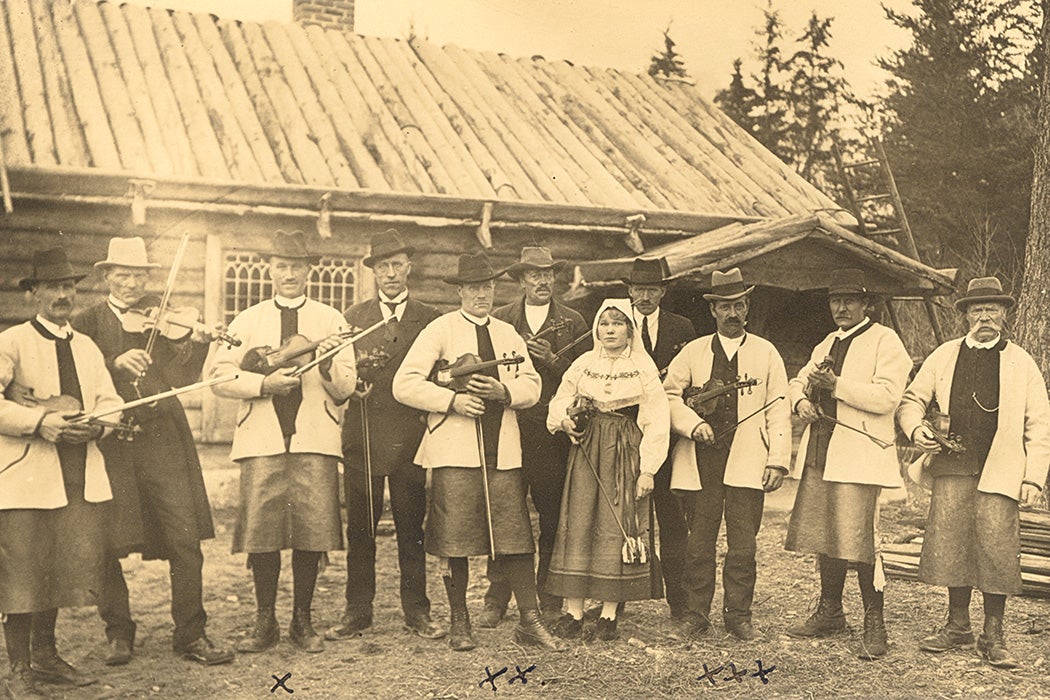When it comes to politics, folk musicians and their fans tend to be left of center. That’s true in many places beyond the United States, including Sweden. Yet, as ethnographer David Kaminsky wrote in a 2012 article, folk music is a rallying point for Sweden’s right-wing nationalists—much to the dismay of many in the subculture.
“The people among whom I do my research find a good deal of joy in embedding themselves in a deeply rooted tradition,” Kaminsky writes. “At the same time, they are often acutely aware of the reactionary political purposes to which that story has been put.”
In contrast to the longstanding US tradition of including Black and labor movement songs in the “folk” category, Kaminsky writes that, in the 1930s, Swedish proponents viewed folk “as a bulwark against the degenerate tastes of the urban working class and their foreign, commercial, mechanized jazz.” This was part of a romantic, preindustrial Nordic mythos—which became uncomfortable for many after Hitler adopted it for his own purposes, contributing to a decline in interest.
Following the American folk-music revival of the 1960s, Swedes became increasingly interested in their own folk music in the ’70s. Like its American counterpart, this musical movement was closely tied to leftist politics of the time.
That became more complicated in the late 1980s and early ’90s, when the emerging anti-immigration Sweden Democrat Party began pushing to move state funding away from multicultural art and heritage projects and instead support groups that “preserve and revive Swedish cultural heritage.” Many in the Swedish folk music world have pushed back against this agenda. That’s forced them to try to find ways to talk about folk music that don’t feed into a vision of a racially defined Swedish culture under attack from foreigners.
One approach some have employed is deconstruction—dismantling the image of Swedish folk music as a fixed tradition and acknowledging the ways different waves of migration led to shifting cultural products over time. Another is regionalism, focusing on music from specific provinces and breaking down the idea of a unified national cultural tradition. A third is multiculturalism, emphasizing the way influences from other parts of the world are helping Swedish folk music develop in new and interesting ways. However, Kaminsky suggests that all these approaches run the risk of either diminishing the value of culturally grounded music traditions in general or treating Sweden as uniquely exempt from tradition and defined only by its liberal democratic values.
Weekly Newsletter
A final option is to define Swedish folk music simply as a nineteenth-century genre with particular formal characteristics. But Kaminsky notes that this risks ceding the appeal of cultural tradition to the right.
If there’s no perfect solution for those on folk’s left, Kaminsky points out that the right faces its own problems with its attempts to appropriate folk music. He notes that at the time he was writing the Sweden Democrats had repeatedly sought people to play the fiddle or nyckelharpa at their meetings without success.
Two Tips for Teaching:
Explore Swedish folk music in the Scania Music Collections of the Folklife Archives of Lund University. Smithsonian Folkways also offers samples of Swedish folk songs performed by Sven-Bertil Taube.
Support JSTOR Daily! Join our membership program on Patreon today.







